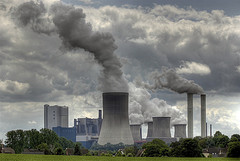- 1 read

The Massachusetts Institute of Technology released a report last week analyzing the best ways to reduce our global coal emissions. The findings of the MIT spring symposium are expected to lead the way for both developing and developed nations in making coal a more environmentally friendly option.
MIT, a trusted leader in environmental and coal research, has stated that we cannot realistically cut greenhouse gas emissions by a significant amount without cutting emissions of coal-fired plants. Coal plants are responsible for one-third of the United States’ CO2 emissions, and China is well on its way to having double the number of U.S. plants, according to a press release by Entergy Corp., which sponsored a related MIT symposium in March. With nations around the world relying on and increasing their coal dependence, the MIT report stresses the timely installation of several policies that can effectively reduce our impact on the climate.
Retrofitting current coal plants with emission-reducing technologies is the go-to option in the proposal. Striving for “cleaner coal” can be achieved in a few ways: sprucing up existing power plants can reduce CO2 emissions by 4-5 percent; burning biomass along with coal can reduce the amount of coal needed, reduce emissions, and distribute inputs among several resources; we can implement carbon capture and storage (CCS) apparatuses in coal plants in order to continue burning coal without releasing the emissions — an option that still has many unanswered questions and lacks funding. Capturing carbon is expensive in the first place — about $50 to $70 per ton — and storing it is problematic and risky. China may have better opportunities for CCS due to its newer facilities, but no government has yet figured out how to safely store it due to insufficient investment.
MIT has proposed its own financial solution: the US government should allocate $12 billion to $15 billion for the development of large-scale CCS programs, along with an additional $1 billion over the next decade to be spent on research and development on clean coal plants. There also needs to be a globally-followed cap-and-trade program to limit the amount of coal CO2 emissions allowed by nations.
But while funding for cleaner coal may sound like a good start, many countries may not be able to afford such development programs; others simply won’t bother. China has refused to cut its emissions for years, for the U.S. emits more pollution per person, and the volume majority of greenhouse gases in our atmosphere are products of the developed world. The MIT report strongly advises cooperation between China and the U.S., and the idea of retrofitting coal plants worldwide will hopefully end the emission differences. No matter what the U.S. plans on doing, it needs to be affordable enough for developing countries to implement, and it needs to start soon.

